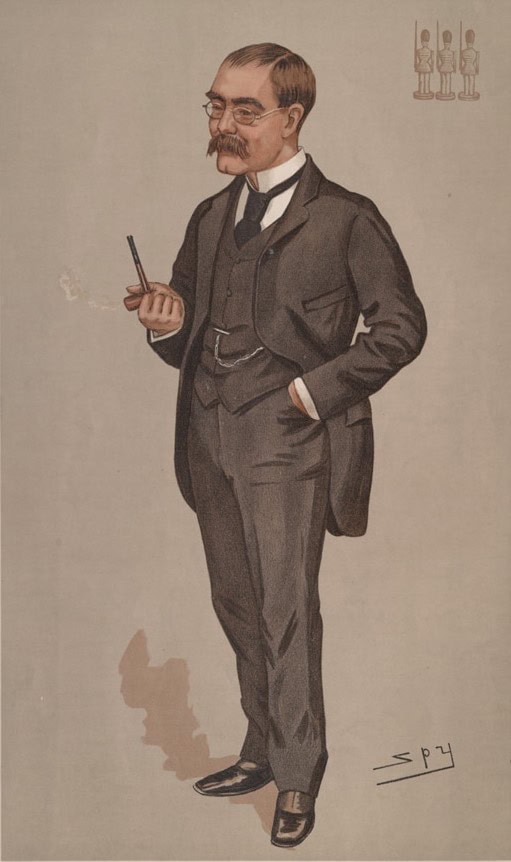
Born in Bombay, India, Rudyard Kipling was an English journalist, poet and short-story writer. In 1907, he was awarded the Nobel Prize in Literature, as the first English-language writer to receive the prize, and at 41, its youngest recipient to date. His reputation has suffered in recent years as many of his views on the British Empire and its subjects do not always chime with current political and social views. When he died he was honoured by having his ashes interred in Poets’ Corner in Westminster Abbey alongside other greats such as William Shakespeare, the Bronte sisters, Jane Austin and Charles Dickens.
However, his works of fiction which include The Jungle Book, The Second Jungle Book, and Just So Stories have an enduring charm and are considered classics. His poems have also stood the test of time, with If- being arguably the most famous. In Just So Stories, The Elephant’s Child describes how the elephant got its trunk and ends with this poem:
I keep six honest serving-men:
(They taught me all I knew)
Their names are What and Where and When
And How and Why and Who.
I send them over land and sea,
I send them east and west;
But after they have worked for me,
I give them all a rest.
I let them rest from nine till five.
For I am busy then,
As well as breakfast, lunch, and tea,
For they are hungry men:
But different folk have different views:
I know a person small—
She keeps ten million serving-men,
Who get no rest at all!
She sends ’em abroad on her own affairs,
From the second she opens her eyes—
One million Hows, two million Wheres,
And seven million Whys!
Kipling could have had project managers in mind as What, Where, When, How, Why and Who are the key ingredients of a generic project initiation document or project charter. The only significant omission is How Much but then us English do find discussions about money to be distinctly bad form. You can of course add many other items to these startup documents – business case, risks and issues, governance etc – but there is a lot to be said for keeping these simple questions in mind when starting a project. There is a tendency for Prince2 Project Initiation Documents (PID) or PMI Project Charters to balloon to epic proportions with information that really should be in a project repository.
A good technique is to practice getting the startup document on a single sheet of paper to produce a POAP – Project On A Page. Not only does it concentrate the mind on the important aspects of your project it is a document that business managers and other interested stakeholders can be given which stands a fair chance of being read and understood. Add in the top few significant risks and issues and project status (RAG status) and you have a ready-made Highlight Report that can be circulated to all those who are interested.
When your startup document is complete you should, like Kipling, be able to answer these six honest serving men.